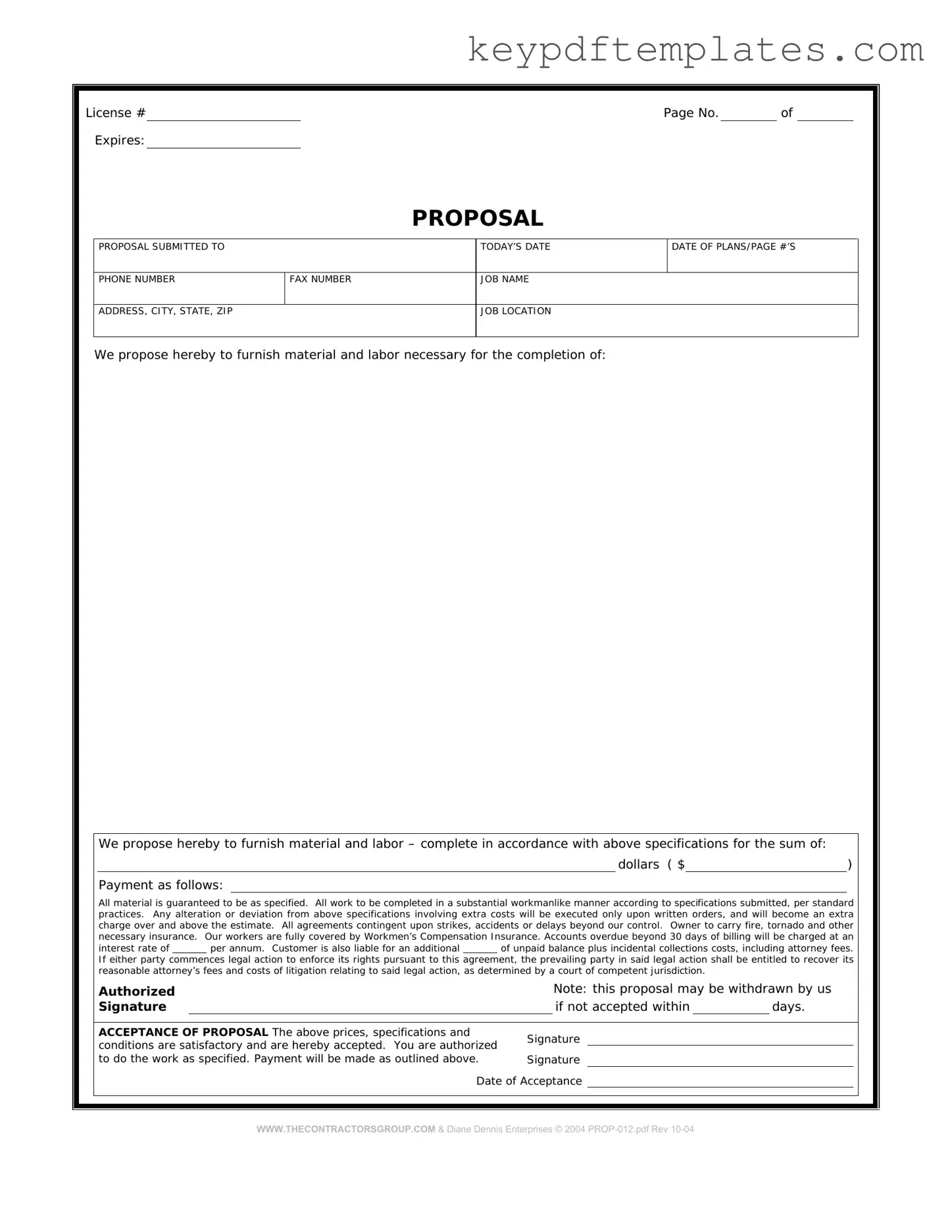Get Construction proposal form Form
The Construction Proposal Form is a crucial document used in the construction industry to outline project details, costs, and timelines. It serves as a formal offer from a contractor to a client, detailing the scope of work and pricing. Understanding this form is essential for both contractors and clients to ensure clarity and agreement before any construction begins.
Modify Document Online
